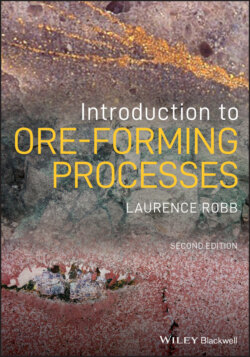Читать книгу Introduction to Ore-Forming Processes - Laurence Robb - Страница 18
Common Ore and Gangue Minerals
ОглавлениеIt is estimated that there are about 3800 known minerals that have been identified and classified (Battey and Pring 1997). Only a very small proportion of these make up the bulk of the rocks of the Earth's crust, as the common rock forming minerals. Likewise, a relatively small number of minerals make up most of the economically viable ore deposits of the world. The following compilation is a breakdown of the more common ore minerals in terms of chemical classes based essentially on the anionic part of the mineral formula. Also included are some of the more common “gangue” minerals, which are those that form part of the ore body, but do not contribute to the economically extractable part of the deposit. Most of these are alteration assemblages formed during hydrothermal processes. The compilation, including ideal chemical formulae, is subdivided into six sections, namely native elements, halides, sulfides and sulfosalts, oxides and hydroxides, oxysalts (such as carbonates, phosphates, tungstates, sulfates), and silicates. More detailed descriptions of both ore and gangue minerals can be found in a variety of mineralogical texts, such as Deer et al. (1982), Berry et al. (1983), Battey and Pring (1997), and Wenk and Bulakh (2017). More information on ore mineral textures and occurrences can be found in Craig and Vaughan (1994) and Ixer (1990).
